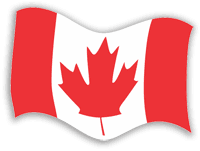|
The struggle to unseat
the Taliban from power in Afghanistan, and keep it from
returning to power, is Canada’s longest war by far. On September
11, 2001 terrorists hijacked four US passenger planes; they
crashed two of them into the World Trade Center in New York
City, destroying the center, and one into the Pentagon in
Washington. The fourth plane crashed in a field in Pennsylvania
when passengers tried to re-take the aircraft.
Very quickly after, the United Nations and the North Atlantic
Treaty Organization (NATO) condemned the attacks and invited
nations to join to destroy the Taliban regime in Afghanistan.
The Taliban were blamed because they had hosted and protected Al
Qaeda — which had launched these attacks and many earlier ones —
and its leader Osama bin Laden.
Canada’s initial response was to send a naval task force of six
ships to the Persian Gulf in October 2001 to help enforce an
embargo on the Pakistan coast to prevent smuggling of weapons
and other war-making material to the Taliban and to stop
terrorist leaders from fleeing by sea. Six air force planes were
also sent to help ferry troops and supplies.
Canadians in overwhelming numbers (more than 70 percent in some
opinion polls) also demanded a land contingent. The first part
of that commitment was a small number (40) of highly secret
special forces — commandos trained to operate very close to the
enemy or even behind enemy lines — from a Canadian unit called
Joint Task Force II. It is assumed they were sent in October or
November 2001. On October 8, 2001 the government announced that
it would send some 700 troops to southern Afghanistan’s Kandahar
province to fight under American command.
The Canadian troops were the 3rd Battalion of the Princess
Patricia’s Canadian Light Infantry (3PPCLI) accompanied by
troops and vehicles of Lord Strathcona’s Horse, a Canadian
armoured regiment. They stayed in southern Afghanistan from
mid-January, 2002 to July 2002 and then returned to Canada. The
only four deaths in the contingent resulted from a mistaken
bombing by a US fighter jet. Canadian ships and aircraft
remained on Afghan war duties after 3PPCLI left.
In February 2003 the government announced that Canadian soldiers
would return to Afghanistan in the late summer to take over the
International Security Assistance Force (ISAF) which was then
confined to the capital city of Kabul. ISAF was a UN-sponsored
force that was established in late 2001 to prevent the departing
Taliban from returning to Kabul and to prevent war lords from
fighting to control the capital. Canada had considered joining
ISAF in late 2001 rather than going to Kandahar, but Britain,
which first led the mission, would not accept Canada’s
conditions.
Now Canada intended to command ISAF and to provide about 2,000
soldiers for security and other functions to aid the Afghanistan
government. But as the time for deployment drew closer, the
Canadian military acknowledged that Canada did not have the
capacity to undertake all those chores. With the urging of the
United States, the NATO offered to join with Canada, but under a
Canadian commander. Thus NATO joined the Afghanistan operation.
Canadian Lieutenant-General Rick Hillier, commander of the
Canadian army, took command of ISAF in early February 2004 and
stayed in Kabul for nine months. At this point, plans were being
made to have NATO expand ISAF to all of Afghanistan in the late
spring or early summer of 2006. Different NATO countries were
volunteering to establish Provincial Reconstruction Teams in all
of Afghanistan’s provinces. These PRTs, as they were called,
were supposed to work with local political, military, and police
leaders to begin re-building the country. At the same time, the
training of the Afghan army and police was also to be undertaken
by NATO countries.
Canada volunteered to set up its PRT in Kandahar Province, in
the northern suburbs of Kandahar City. Canada also undertook to
move almost all its forces in Afghanistan from Kabul to Kandahar
province. The government warned Canadians that this new mission
would likely involve combat with the Taliban who thought of
Kandahar as the centre of their movement. Kandahar is a major
opium and marijuana-producing region and the home of thriving
drug and weapons smuggling along the border with Pakistan. When
the Canadians began to move into Kandahar in the spring of 2006,
Canadian casualties increased dramatically. Some of the
casualties occurred in actual combat with the Taliban but most
resulted from road side bombs, also known as Improvised
Explosive Devices or IEDs.
The Canadian mission in Kandahar was extended to 2009 by a vote
in Parliament in May of 2006 and extended again to 2011 in
another vote in February 2008. So far more than 130 Canadians
have been killed in the mission and hundreds more wounded.
Canadians remain deeply divided on whether or not Canada should
continue with a combat mission — or any kind of mission — in
Afghanistan after 2011, and Prime Minister Stephen Harper’s
government appears determined to bring the troops home.
The Canadian Experience is a 52-week
history series designed to tell the story of our country to all
Canadians. Sponsored by Multimedia Nova Corporation and
Diversity Media Services partners, the series features articles
by our country’s foremost historians on a wide range of topics.
Past articles and author bios are available at
http://www.cdnexperience.ca. The Canadian
Experience is copyright ©2010-2011 Multimedia Nova
Corporation.
|
|
 #52 Canada in
Afghanistan
#52 Canada in
Afghanistan
